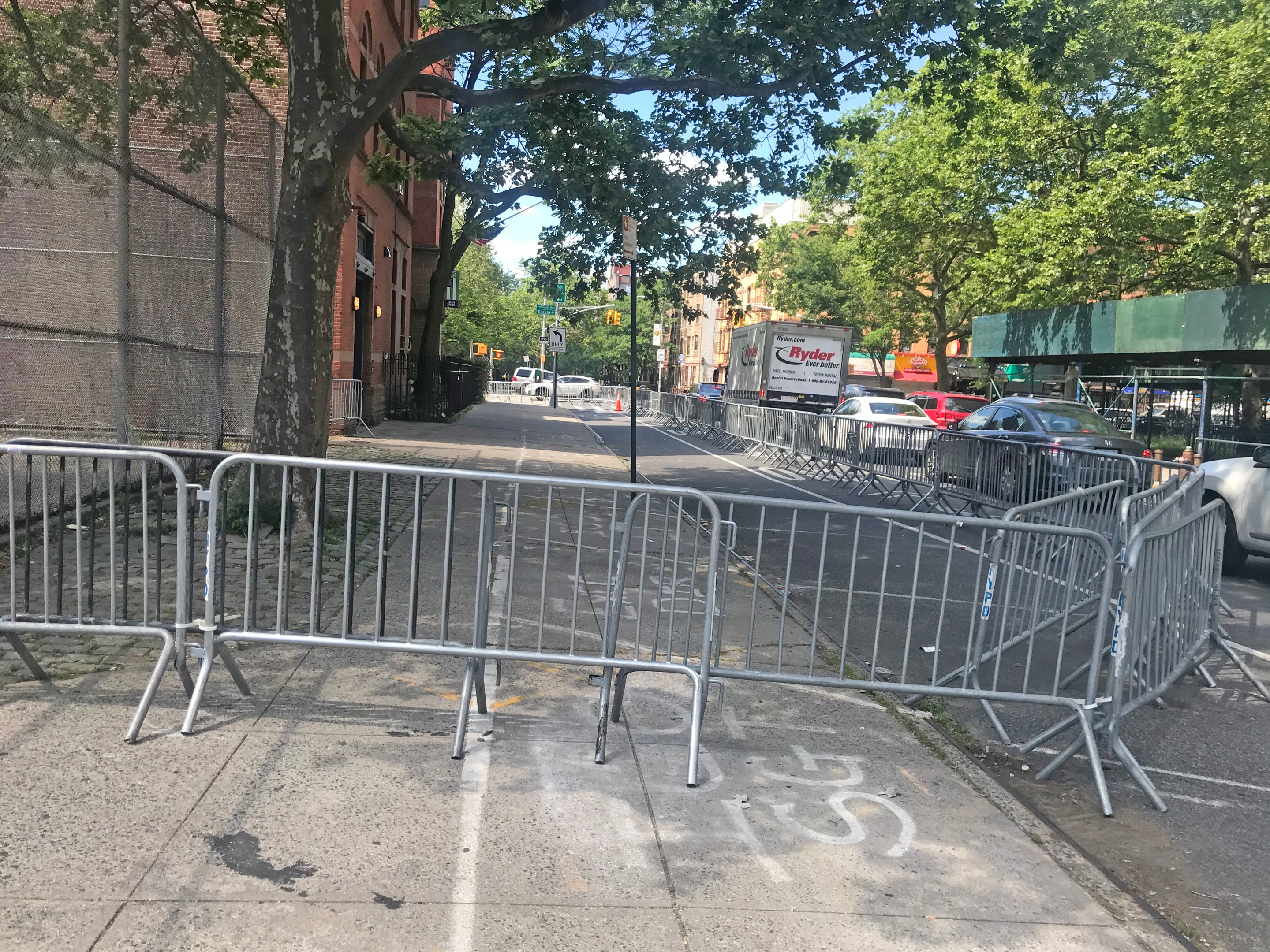Mayor de Blasio, who at least on paper runs the NYPD, says he will wait for police officials to decide when they're ready to remove their possibly illegal barricades from in front of station houses across the city and restore public roadways for public use.
"I will get an update from the NYPD, but I think safety is the central question here," the mayor told Streetsblog at his daily press conference today, referring to some police precincts around the country that were a target of protesters.
"The fact that our precincts were properly protected, everyone involved was properly protected, ... that was important to do," he added. "What needs to be done from this point on and how it can be modified is a very fair question and I can get an update on what's going to happen with that."
Streetsblog reached out to the police department, which appears to be the real authority here, but did not hear back.
The mayor's comments came after Manhattan Borough President Gale Brewer called for the police to pull back to their fortified bases withdraw from their recently occupied territories.
I hope that the NYPD can take down the barricades at West 82nd & at all precincts, like it was before May. I’d also like to see the police go back to regular, parallel parking of vehicles in front of the precinct. https://t.co/dKPAOHLVi4
— Gale A. Brewer (@galeabrewer) July 7, 2020
Brewer, of course, is just the latest New Yorker demandng that the NYPD stand down from public space, as Gothamist recently reported, following up on Streetsblog's initial coverage. The New York Civil liberties Union has also made the demand.
It is unclear whether the NYPD is even allowed to commandeer streets in the manner that it has.
"Under the City Charter, NYPD Commissioner Dermot Shea only has the authority to suspend traffic rules (in this case obstructing traffic) for up to 48 hours during an emergency," said the keeper of the Placard Abuse Twitter account last month, offering a snapshot of the relevant page.

The mayor's refusal to confront the NYPD on its possibly illegal theft of public space comes as he is dealing with a mini-revolt from both Shea and his second in command, Chief of Department Terence Monahan. Earlier this week, both police officials announced that they opposed a Council bill, supported by the mayor, to ban chokeholds and other police maneuvers that would restrict a suspect's ability to breathe. Mid the public spot, the mayor opted not to sign the bill at a ceremony on Tuesday.
In a related public space question, Streetsblog also asked the mayor why he would not make his weekends-only open restaurants plan a 24-7 initiative so that the roadways could be properly secured with heavy-duty barricades. Currently, the initiative uses light, easy-to-penetrate, barricades so that they can be easily removed after business hours on Sunday night.
But in light of the fact that since George Floyd was killed in Minneapolis, there have been 66 incidents nationwide in which drivers used their cars as weapons, some restaurateurs and diners are begging the city for streets that are fully closed to automobiles.
The mayor is unconvinced.
"The open restaurants exist in a wide range, including a lot of streets you would never close off," the mayor said (though it is unclear who he means by "you" in that construction).
He added that the city chose the Friday-through-Sunday strategy because he believes that is when most people want to go to restaurants. But on the plus side, the mayor said the program has proven so popular that, perhaps, it can point the way towards removing cars from some streets to promote a European-style café culture
"We're having a good experience here. Something that we have tried that is really working and will cause a real re-examination for the future," he said. "What we are learning from the open streets and open restaurants is really positive. It is showing us new and powerful opportunities."
Such opportunities will likely be left until after the pandemic. In the short term, the mayor has actually made it easier for people to own cars and store them for free in the public right of way, by reducing the number of times per week a driver must move his or her car under the alternate-side-of-the-street-parking rules.






